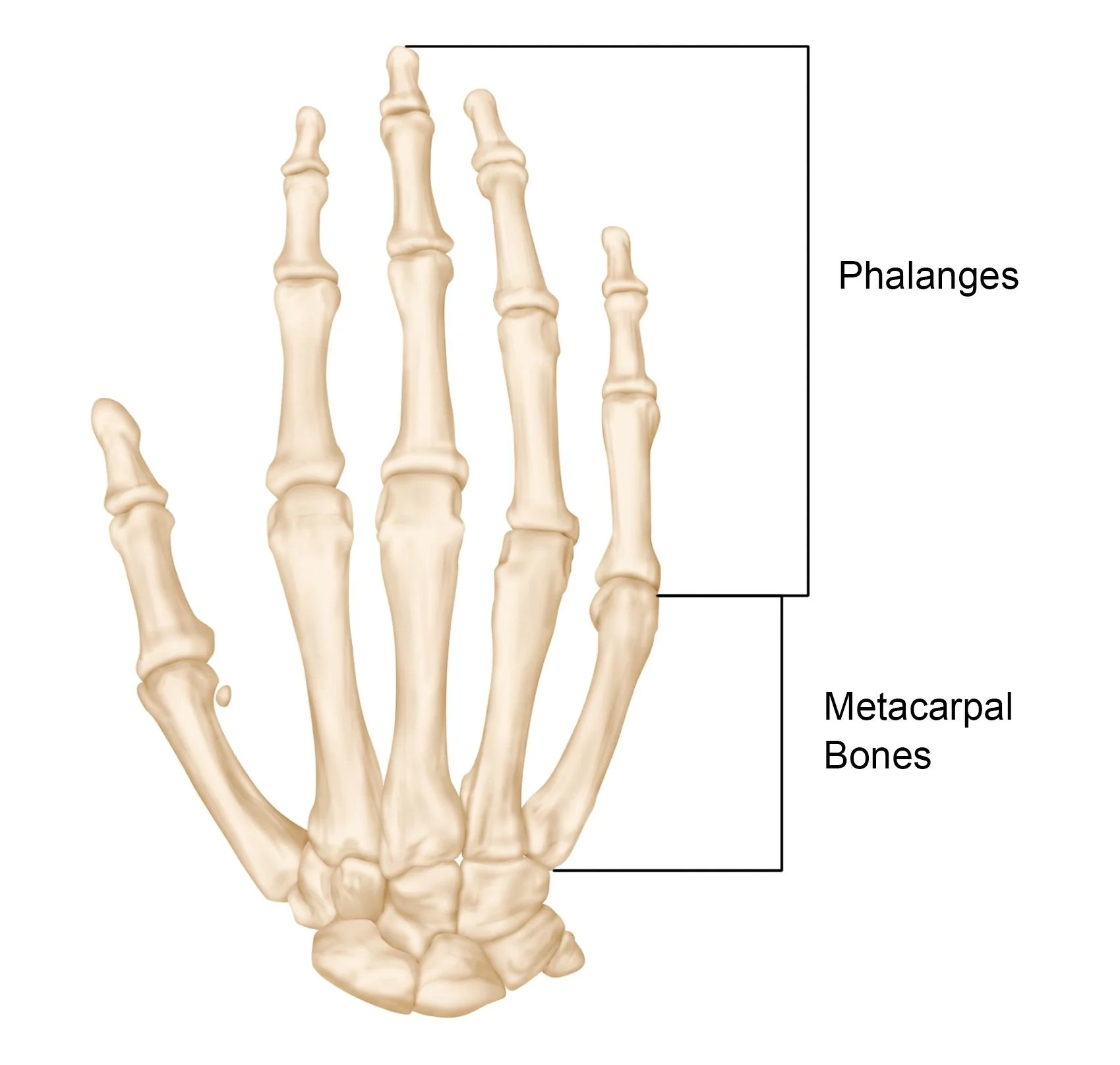FRACTURE – METACARPALS
Metacarpals are the long bones in your hand that connect your wrist to the short bones of your fingers. Breaking these bones can be a result of a twisting injury, a fall, a crush injury, or a direct contact in sports. Symptoms may include swelling, tenderness, deformity, inability to move finger, shortened finger, finger crossing over its neighbor, and/or depressed knuckle. The goal of treatment is to realign the bone so that proper healing can take place. Depending on the alignment of the break, your surgeon may or may not recommend surgery.
The metacarpals are the five long bones in your hand that connect your wrist to the short bones of your fingers, also known as the bones located in the palm. Breaking these bones can be a result of a twisting injury, a fall, a crush injury, or a direct contact in sports. One of the most common hand fractures is a fracture to the 5th metacarpal, the bone that connects to the little finger. It is commonly called a “boxer’s fracture”.
Symptoms may include swelling, tenderness, deformity, inability to move finger, shortened finger, finger crossing over its neighbor, and/or depressed knuckle. The goal of treatment is to realign the bone so that proper healing can take place. Depending on the alignment of the broken bone, your surgeon may or may not recommend surgery. First, your doctor will check the fracture alignment. If the bone fragments are not in the correct position, they may perform a closed reduction, manipulating the bones back into their normal position non-surgically. A brace, cast or split may be used to immobilize the finger/hand so the bone can heal in the corrected alignment.
Surgery is necessary for severely displaced, shortened or rotated fractures. Open fractures, where bone fragments penetrate out of the skin, also require surgery to decrease infection risk. First, the surgeon will perform an open reduction to reposition the bone fragments into their normal position. Wires, screws, pins, staples or plates can be used to hold the bone fragments in place. A cast or split may be recommended post-surgery to protect the fracture while it heals.

